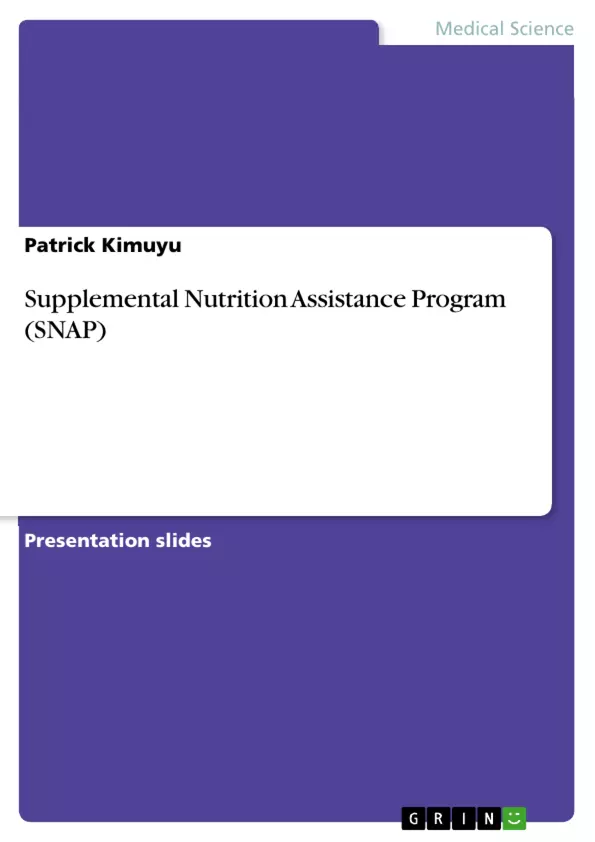In retrospect, public assistance programs have been playing an integral role in promoting social security.Foremost, they provide basic economic security to the low-income families and minority populations including disabled individuals. In principle, public assistance programs provide economic security, exclusively to the needy persons.
These persons experience difficulties in meeting basic needs because they are either receiving insufficient social insurance benefits or not eligible for social insurance. Over the decades, legislative changes have been adopted to meet the needs of the dependent individuals.
This has promoted the well-being of the needy persons, primarily the aged, children and the disabled people.
In the state of Georgia, several public assistance programs are implemented. Therefore, this presentation discusses the Supplemental Nutrition Assistance Program (SNAP). It aims at helping social workers to understand the scope of SNAP.
Inhaltsverzeichnis (Table of Contents)
- INTRODUCTION
- PROGRAM'S OVERVIEW
- EVOLUTION OF SNAP
- MEANS-TEST APPLIED BY SNAP
- Income requirements
- Resource requirements
- Immigrant status and eligibility
- ADMINISTRATION OF SNAP
- CONCLUSION
Zielsetzung und Themenschwerpunkte (Objectives and Key Themes)
This presentation aims to provide social workers with a comprehensive understanding of the Supplemental Nutrition Assistance Program (SNAP) in the state of Georgia. It explores the program's history, evolution, eligibility criteria, and administration. The presentation highlights the program's role in promoting social security and providing economic assistance to low-income households.
- Economic security for low-income families and individuals
- Federal and state government involvement in program administration
- Eligibility criteria based on income and resources
- Evolution of the SNAP program from its inception to the present day
- The program's impact on reducing poverty and promoting healthy lifestyles
Zusammenfassung der Kapitel (Chapter Summaries)
The introduction emphasizes the importance of public assistance programs in promoting social security, focusing on their role in supporting low-income families and individuals. The "Program's Overview" section provides a brief summary of the SNAP program in Georgia, highlighting its federal funding and its goal of providing food assistance and nutrition education to eligible households. The "Evolution of SNAP" chapter traces the program's history from its origins in 1939 through its expansion and various amendments over the decades, leading to the establishment of the Electronic Benefits Transfer (EBT) system and the current program name, SNAP. The "Means-Test Applied by SNAP" chapter details the eligibility criteria, including income requirements, resource limitations, and immigrant status guidelines. The "Administration of SNAP" section discusses the shared responsibility of the federal, state, and local governments in administering the program. The conclusion reiterates the importance of social workers understanding SNAP and its role in addressing poverty and promoting the well-being of disadvantaged individuals and families.
Schlüsselwörter (Keywords)
This presentation focuses on the Supplemental Nutrition Assistance Program (SNAP), public assistance, food stamps, social security, low-income households, poverty, eligibility criteria, income requirements, resource limitations, federal funding, state administration, nutrition education, and social work practice.
- Quote paper
- Patrick Kimuyu (Author), 2018, Supplemental Nutrition Assistance Program (SNAP), Munich, GRIN Verlag, https://www.grin.com/document/411949



